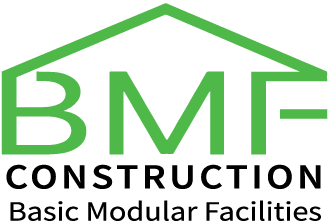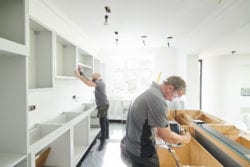How to Soundproof Your Home or Office
How to soundproof your home or office? There are multiple methods, let’s review the more common and cost effective options.
First, we should consider the basics of noise transmission to determine the best application.
Two Types of Sound Transmission
There are typically two forms of sound transmission that need to be addressed to soundproof your home or office:
Impact noise (sound from footsteps, dropping something on the floor, closing doors, etc.)
Airborne sound: transmitted via air waves i.e. talking, TV, radio, traffic.
Sound Reduction Ratings
To identify the best method to employ for your home, a basic understanding of sound rating will help.
Sound attenuation efficacy is determined by the STC rating (Sound Transmission Class). The higher the rating (in most cases), the more effective the system.
A typical 2×4 interior non-insulated wall ( ½” drywall on each side) may have a STC rating of less than 33, which is poor. Adding batt insulation may increase this to about STC 39.
An STC rating in the 50s may be considered acceptable in a residential setting (although loud music or heavy traffic may be an issue).
An STC of 60 and above is considered very good in residential settings.
Direction of Sound
The most common sources from which sound will enter a room: ceilings, walls, and floors. Additionally, an often overlooked source would be openings and mechanical systems.
There are a variety of methods to reduce sound transmission, a few of the more common and cost effective will be offered here.

How to Soundproof Walls& Ceilings
- Insulate ceilings and walls with batt or mineral wool insulation. Batt insulation is a more cost effective method than mineral wool, although mineral is slightly more effective. An installation method of 1 layer of 5/8” sheetrock (1 on each side of walls) with batt insulation: STC 39
- Insulate ceilings and walls and install (2) layers of 5/8” sheetrock (each side)
- Insulate with 2 layers of 5/8” sheetrock including an acoustical caulking such as Green Glue or Quiet Seal
- Add resilient channels in addition to the above (a form of decoupling, approximate STC 60-65 at walls)
- At walls adjacent to very noisy areas, a double wall can be constructed in addition to the above measures. This will add cost to the installation as well as reduce the floor area of the room, but may provide STC ratings up to 70
Sound Rated Wallboard: in addition to the above, there are wallboards (similar to drywall) which are designed to reduce sound transmission. One such product is “Quietrock”. These may be considered in lieu of standard 5/8”. However, the cost per sheet is significantly greater than standard drywall.
Building Code
As a point of reference, the International Building Code requires an STC rating of 50 for multifamily new construction.

Flooring Underlayment Insulation

Mineral Wool
Reducing Impact Noise from above:
To help eleviate impact noise from above, prepare or retrofit the floor system overhead and include treatments such as:
- Carpeting
- Pads and mats designed to reduce sound transmission under wood flooring and carpet
- Plywood Subfloor installations: several variations of additional ply subfloor layers in conjunction with Green Glue and sound matting could yield STC ratings of up to 65-70
Reducing Noise from Other sources
Oftentimes, other (overlooked) sources contribute to noise, these may include:
- Door openings
- Windows
- Sound transmission from heating and ventilating equipment and ductwork
- Other penetrations
These other sources should be considered in the overall approach. Also, the best sound proofing measures applied to walls, floors and ceilings may fall short if sound transmits into a room from the duct system!
Sound rated doors and windows can also be installed to mitigate sound transmission through these openings. Heavy drapes provide some added protection from sound at window locations.
Seal all penetrations in walls, ceilings and floors
This is just a brief and limited explanation for reducing noise in your home and office. Also, there are variations and conditions to all of the above. In addition, the efficacy of any of these methods will differ. STC ratings are approximate. The effectiveness of any installation will also depend upon following manufacturers installation procedures.
To soundproof your home or office, it is advisable to contact an experienced contractor or acoustical consultant to explore your options. When remodeling your home or office, call BMF Construction at 415.699.9124 to see how we can help. Serving San Francisco and the Peninsula


